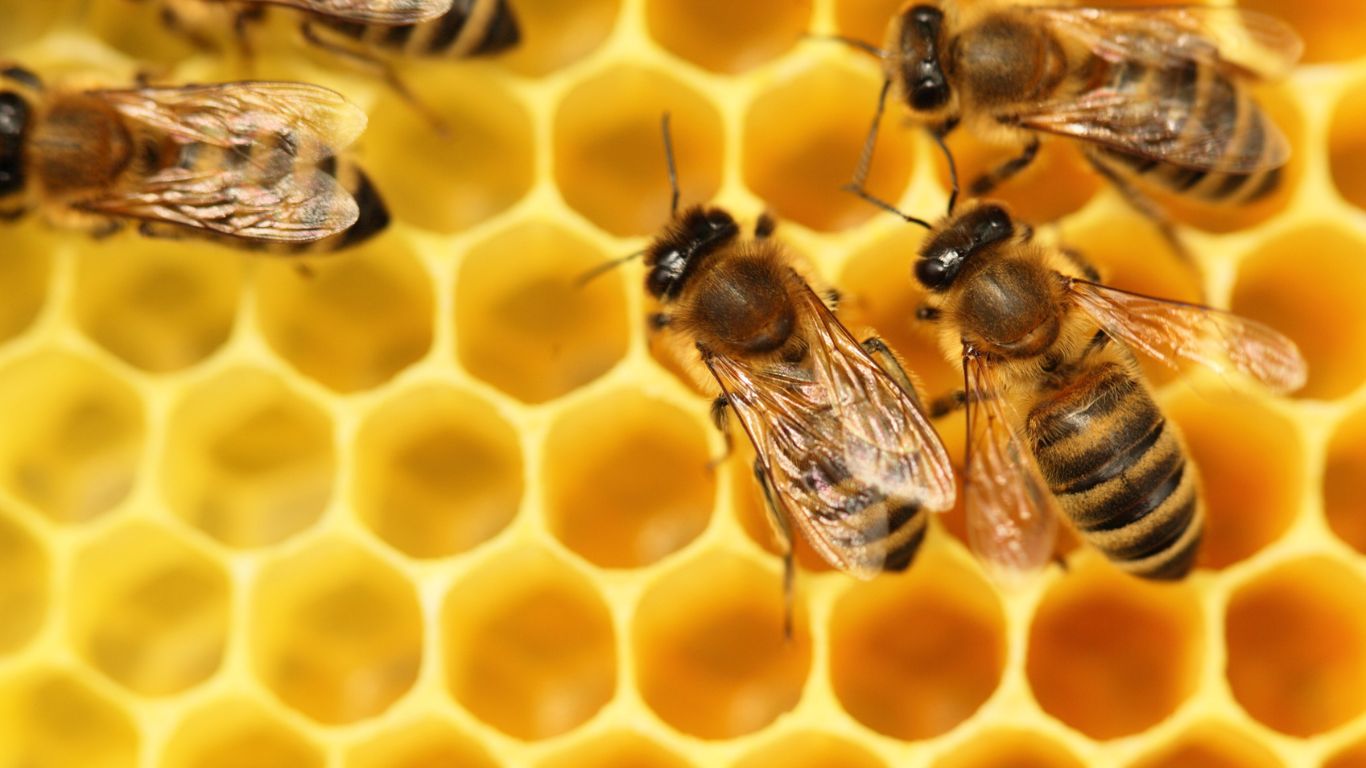
Many Canadians love the classic simplicity of the peanut butter and honey sandwich, while others enjoy a pile of honey-garlic wings (the best, right?), or anything else made with that sweet nectar.
Honey is definitely the bee’s signature staple, but did you know that some of these hard-working insects also pull duty in making sure a lot of our other food is grown?
Like in other countries, Canada’s beekeeping industry provides pollination services to other farmers. Orchard fruits, as well as many berries, vegetables, forage and even hybrid canola seed benefit from these services. According to 2017 estimates from Agriculture and Agri-Food Canada, the total economic contribution of honeybee pollination through direct harvest value was about $2.57 billion.
Pollinator insects such as honeybees are essential but also fragile. Recently, producers have faced several challenges that affected the survival rate of several colonies, which highlighted the need to better understand the economic and environmental impact of honeybee production. While most figures presented below are from 2021 or before, Statistics Canada will continue to monitor changes in this industry over the next few years.
Honey production flows over time
There were 783,575 live honeybee colonies in Canada in 2021, up from 772,652 in 2016 and a nearly 40% (39.6%) jump from 561,297 in 2011.
Farms reporting live honeybee colonies totalled 4,884 in 2021, up from 4,871 in 2016 and 3,272 in 2011.
Although close to 1 in 3 of those farms (30.1%) in 2021 were in Ontario, Alberta had the most total colonies, at 324,311. There’s a real buzz across the prairies, with Saskatchewan (111,358 colonies) and Manitoba (106,575) rounding out the top 3 among provinces in 2021.
Canada’s honey producers harvested nearly 106.6 million pounds of honey in 2006—the highest on record since Statistics Canada began tracking production in 1924. Volume-wise, the largest yearly jump on record was observed in 1998, which saw production increase by nearly a half (48.6%) to 101.6 million pounds.
Conversely, production dipped nearly 35% in 2007 to 69.4 million pounds. From 2015 to 2018, production eclipsed 90 million pounds each year, including a 15-year high of about 96 million pounds recorded in 2017.
More recently, production ticked back up to 89.8 million pounds in 2021, following three straight years of decline.
Sweeter value, sales and availability numbers
Honey value increased by 39.4% in 2021 to a record-high $278 million in 2021, due to lower production and supply, contributing to higher prices and value.
Despite lower production, there were 1.14 kilograms of honey available per Canadian in 2021, the third straight year of increases after 0.85 kilograms in 2018.
Total exports for 2021 were just over 7.53 million kilograms, down by one-fifth (21.1%) from 2020. Together, Japan and the United States accounted for over 95% of exports in 2021.
More keepers, but more losses
Along with a rise in the number of farms reporting colonies, the number of beekeepers grew to 13,105 in 2021 thanks to 1,111 beginner beekeepers.
However, many beekeepers in Canada lost a lot of bees last winter, one of the worst on record for mortality rates. Ongoing pandemic restrictions continued to pose challenges to the importation of queen bees to help restore colonies.
In the fall, Statistics Canada will begin to collect data on beekeepers and honey production and value for 2022, in time for a December release.
Contact information
For more information, contact the Statistical Information Service (toll-free 1-800-263-1136; 514-283-8300; infostats@statcan.gc.ca) or Media Relations (statcan.mediahotline-ligneinfomedias.statcan@statcan.gc.ca).
